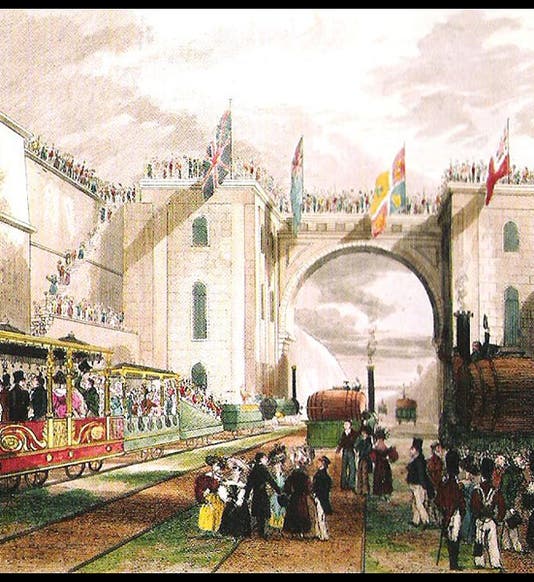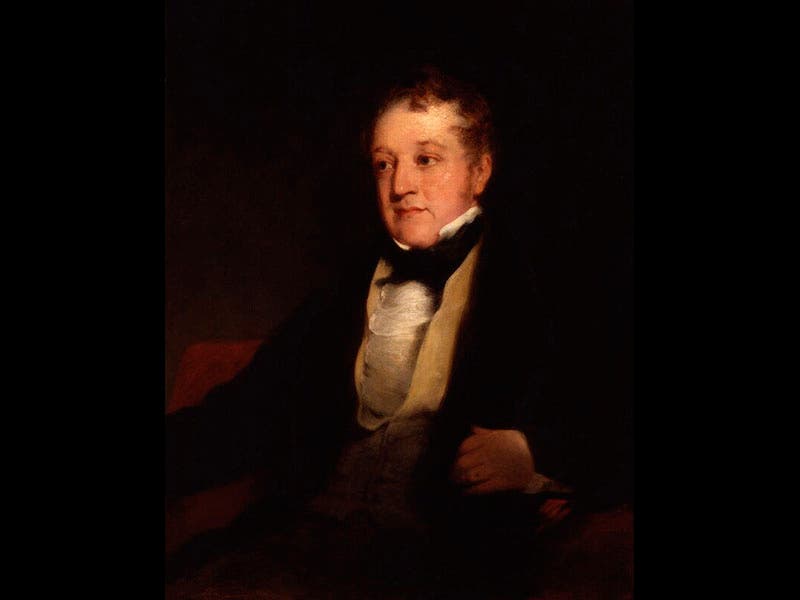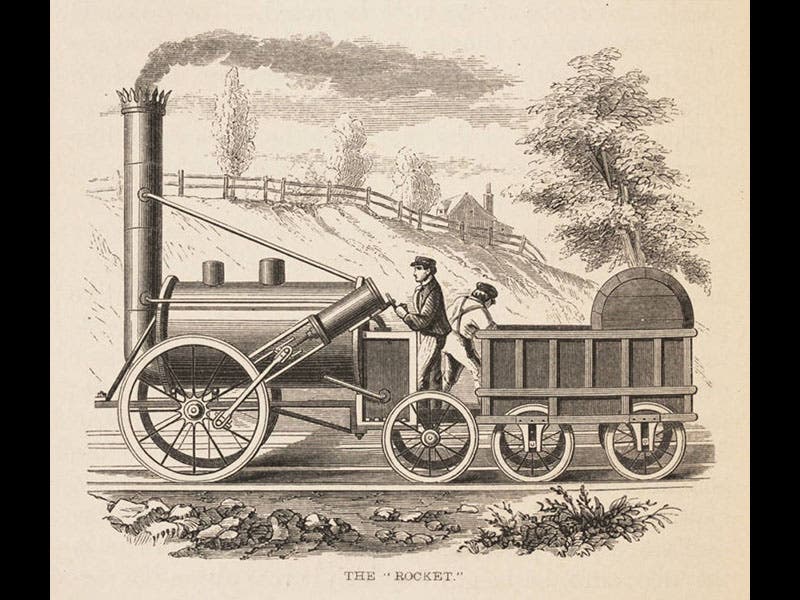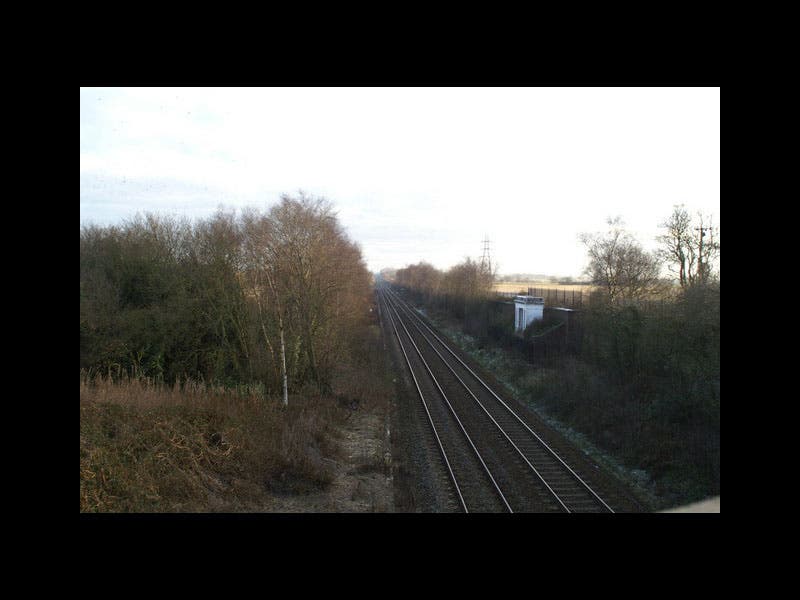Scientist of the Day - William Huskisson
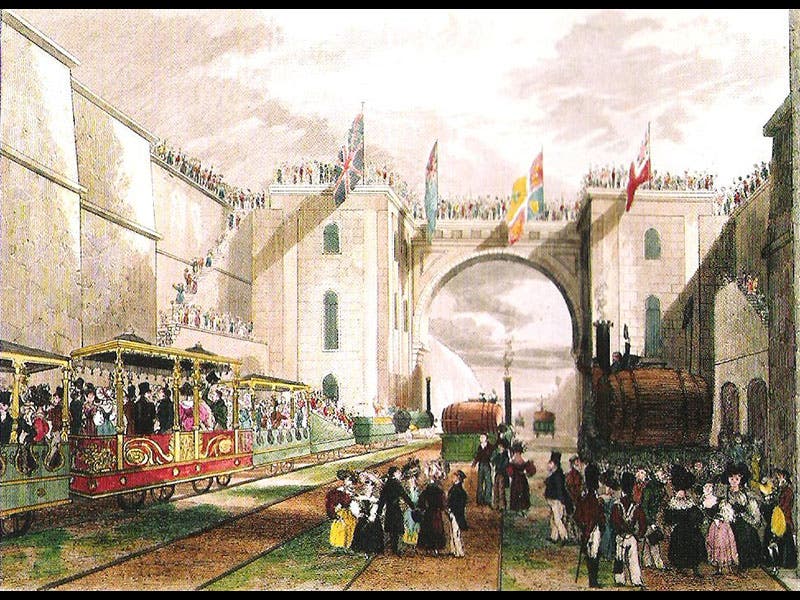
Wikimedia Commons
William Huskisson, a British economist and statesman, died on Sep. 15, 1830, at the age of 60. Huskisson was an MP from Liverpool and an avid proponent of the Liverpool and Manchester Railway. Conceived in 1823, the L&MR was the world’s first passenger railroad. Before the railway was completed in 1830, Huskisson had a falling out with the new British Prime Minister, the Duke of Wellington, so when Wellington agreed to take part in the opening ceremonies on Sep. 15, 1830, there was the potential for a bit of an awkward moment. For the opening, a special railroad car was built for the Duke and his party, wider and taller than the cars that hauled the other dignitaries (including Huskisson) and the Duke's band (first image). This train, pulled by the powerful new steam engine, the Northumbrian, travelled from Liverpool to Manchester on one track. At the controls was George Stephenson, who had designed and built the entire railway, even the bridges and viaducts.
Meanwhile, seven other trains, led by Robert Stephenson in the Phoenix (Robert was George's son, and had built most of the locomotives involved), and Joseph Locke in the famous Rocket, moved down the other track. As they set out, the Duke's band played "See the Conquering hero comes”, from Handel's oratorio, Judas Maccabaeus. When the Duke's train came to Parkside, about halfway to Manchester (the total journey would be about 35 miles), they stopped to get water for the engine, and Huskisson and a number of others clambered down to trainside. It occurred to Huskisson that this might be a good time to mend ties with the Duke, and he went over to the Duke's carriage to greet him and shake his hand. About this time, the Rocket came barreling down the other track. The two tracks were only about 5 feet apart, and because the Duke's car was wider than normal, there was little room between the two trains. Huskisson panicked, tried to jump into the Duke's carriage, but fell down between the trains, and the Rocket ran over one of Huskisson's legs, mangling it thoroughly. They rushed Huskisson to a parsonage in Eccles, near Manchester, but he had lost a massive amount of blood, and he died before the day was out, the first fatal victim of a passenger railway accident. How ironic and tragic that he was run over by the Rocket (third image), the locomotive that had demonstrated, just a year before at the Rainhill Trials, that locomotives were superior to stationary engines in moving railway stock. After Huskisson had been taken away for treatment, the ceremonial procession went on to Manchester and then back to Liverpool, but opening day was pretty much ruined for all the special guests who had witnessed the gruesome accident.
There is a memorial plaque to Huskisson at the site of the water tower in Parkside, but since there is no water tower there anymore, and no access road, it hardly serves as much of a public monument (fourth image; the memorial is the white masonry structure to the right of the tracks). Easier to find is Huskisson’s tomb, which is a round neoclassical structure in a cemetery just below Liverpool Cathedral (fifth image).
Huskisson’s portrait (second image) is in the National Portrait Gallery, London.
Dr. William B. Ashworth, Jr., Consultant for the History of Science, Linda Hall Library and Associate Professor, Department of History, University of Missouri-Kansas City. Comments or corrections are welcome; please direct to ashworthw@umkc.edu.

